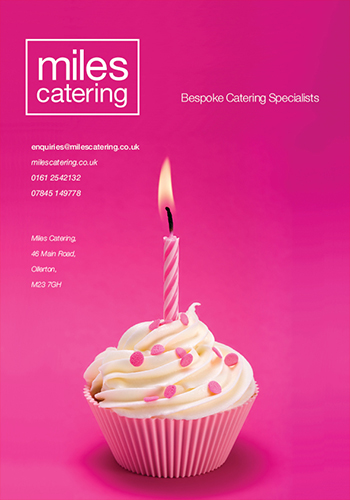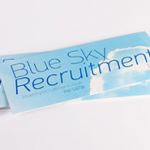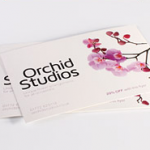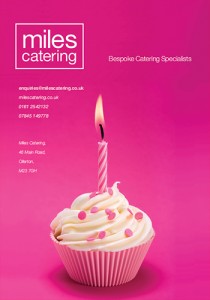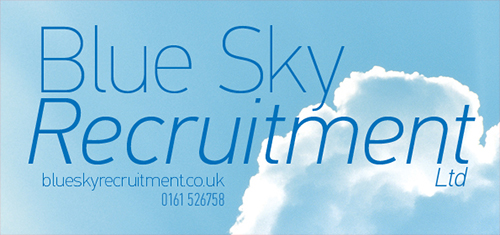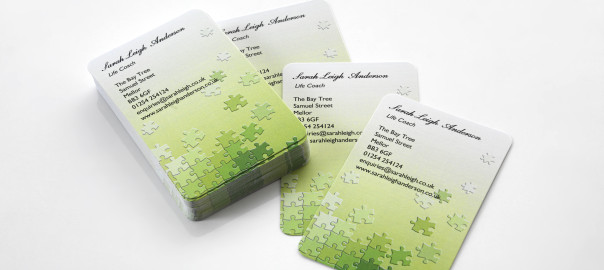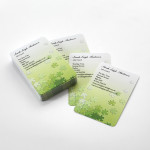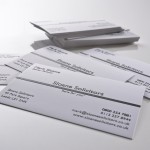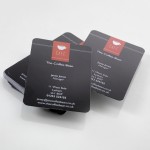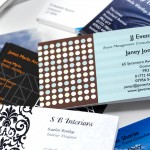Business flyers (also known as leaflets or pamphlets) are a popular and traditional form of paper marketing. They’re perfect for advertising a particular product, service, sale or promotion, or your company as a whole.
Flyers have been used to advertise businesses, political viewpoints and more for hundreds of years, since the invention of the printing press – and they’re no less relevant today. You can hand out flyers to passers-by on the street, distribute them directly to letterboxes, or send them out with an order. You can even have a box of flyers on your premises for members of the public to help themselves.
This guide will describe what business flyers are used for, and the benefits and drawbacks of the four main methods of flyer distribution. We’ll also discuss the legalities of handing out flyers in the UK, and when you might need to apply for a license.
What Are Business Flyers Used For?
Flyers are one of the most valuable forms of advertising for small, medium and large businesses. You can use flyers to:
Spread awareness of your company, and get your name out there
Attract new customers with discounts or limited time offers
Make past customers aware of new products or services, and increase the likelihood that they’ll purchase again
Flyers are considered single-use promotional products, as most people will throw a flyer away after reading it.
But the important thing is that they do read it before discarding it. Most people can’t help reading a leaflet that comes through their letterbox, purely out of curiosity. Even if they’re not interested in your company at that precise moment, they’ll remember your name for the future.
Do Flyers Actually Work?
You may wonder, in today’s increasingly digital world, whether paper flyers are still effective at drawing in potential customers. Wouldn’t a Facebook ad, for example, be a better way of marketing your business?
While digital ads have their place, there’s still something that catches the eye about traditional paper letterbox marketing. It’s easy to scroll past an advertisement on a webpage without even giving it a glance. You’ve probably seen dozens of online ads today – yet how many of them can you name?
But if you receive a physical leaflet in your letterbox, you’ll almost always give it a cursory read-over, even if you end up discarding it. And the company’s name will likely come back to you when you are in need of that particular product or service.
This is because we pay more attention to what we read when it’s on paper, versus a screen. According to the DMA, 60.5% of people will read a flyer that comes through their letterbox.
And don’t forget, not everybody is online. Paper marketing is pretty much the only way to capture offline customers, such as older people who might not use the internet at all.
What Is the Best Way to Give Out Flyers?
Now you know what flyers are, and how they’ll give your business a boost. But how do you actually go about getting your flyers to potential customers?
There are four main ways of distributing advertising literature.
1) Letterbox Marketing (Door Drop)
The most popular form of flyer distribution is called letterbox marketing, otherwise known as “door drop”. If you’ve ever found a leaflet in your letterbox advertising a local takeaway, double glazing company or broadband provider, then you’ll already be well aware of this kind of marketing.
You can either hire someone to go door-to-door and drop leaflets into letterboxes, or you can mail flyers through the postal service, if you have a list of addresses (e.g. of past customers). This is known as “direct mail”.
With letterbox marketing, you’re able to target specific homes – such as people who live in a specific postcode area, or certain types of accommodation.
2) On the Premises
If your company has a physical premises which customers are allowed to visit – such as a shop – you can always hand out flyers inside the building. You could have a box on the counter full of free flyers that your visitors are welcome to help themselves to, for example.
Alternatively, you could have an employee standing near the door, handing out leaflets to people as they leave. This will keep your products or services fresh in their minds, even if they didn’t purchase anything that day.
3) With an Order
Another quick and easy way to get flyers out to clients is to include them for free with every order that a customer places. Simply pop a leaflet into the box with the customer’s order, and they’ll instantly be exposed to other products that you offer, which they may not have been aware of before. You could also include a coupon for a discount on future orders, for example.
Of course, this only really works if you’re selling a physical product, rather than a service. And you’re only able to target existing customers, rather than drawing in new clients. However, it may make customers more likely to shop with you again.
4) Hand to Hand Flyer Distribution
Hand to hand flyer distribution involves, as the name suggests, handing leaflets or flyers directly to customers or potential customers.
If you’ve ever seen someone standing in a busy town centre, offering flyers to shoppers as they pass by, this is an example of a hand to hand flyer campaign. They might also be dressed up in branded clothing or holding a sign to direct shoppers to the store or business premises.
Hand to hand flyer distribution is generally not as cost-effective as letterbox marketing. This is because you’re handing out leaflets to anyone who walks past – so you’re unable to target your distribution to certain demographics (such as age, affluence level, postcode area, and so on).
You’ll also need to apply for a license if you want to hand out leaflets in the street. We’ll get onto this now.
Is It Legal to Hand Out Flyers in the UK?
The U.K.’s laws on flyer distribution are fairly simple, but it’s essential that you know them well. Before you decide how, when, and where you want to hand out your company’s flyers, you must make sure you can do so legally, or that you have the correct licence (when applicable).
You do not need a license to hand out flyers if:
The flyers are for a charity, or based on political, religious or ethical beliefs
You place the flyers directly into people’s letterboxes (door drop), or you send them out via the postal service
You’re handing out flyers inside a building, bus, or taxi
You’re including the flyer for free with an order that a customer has placed
If you’re using any of the above methods, you don’t need anyone’s permission. You can get started straight away. However, if you plan to hand out flyers to people in the street, the rules are different.
Handing Out Flyers in the Street (Hand to Hand Distribution)
If you want to hand your flyers out in the street (hand to hand flyer distribution), you must apply for (and be granted) a license first.
For example, let’s say you plan to hire someone to stand outside your premises to hand out leaflets in the street. You’d need a license for this kind of distribution. If you were to hand them out inside the building, you wouldn’t. But as soon as you set foot outside the door, it’s another ball game.
It’s illegal to hand out business flyers on the street without a license. If you are caught doing so, or you breach the terms of your license (e.g. hand out flyers in an area that your license doesn’t cover), you could receive a fixed penalty notice of up to £150.
For repeat offences, or if the matter goes to court, you could face a fine of up to £2,500 and a criminal record. So, it’s well worth making absolutely sure that you know the rules!
How to Get Permission to Distribute Leaflets
If you’re planning on distributing your company’s leaflets in letterboxes, in the post, with an order, or inside a building, you don’t need to seek any sort of permission or license. You can go ahead and order your flyers straight away.
However, if you’ve decided that you’d like to go the hand to hand route, and hand out flyers on the street (outside your premises, for example) you’ll need to seek permission from the relevant local authority.
Different local authorities (councils) will have different rules on when, where and how you can hand flyers out. The fee you’ll have to pay to obtain the license may also vary. Some councils may issue a badge that whoever is handing out the leaflets will need to wear.
If you’re in England or Wales, head over to this page and input your business’s postcode to find out how to apply for the relevant license.
Can I Hire a Company to Distribute Flyers For Me?
There are plenty of companies that exist purely to assist small, medium and large businesses with leaflet and flyer distribution.
These companies are well-versed on the law and will ensure they operate within the parameters set out by your local council. They will work with you to determine which households will be most likely to respond to your advertising campaign, and outline a target distribution area.
There are two main services offered by leaflet distribution companies:
Direct mail. This involves using the postal system to directly mail flyers and leaflets to potential customers.
Door drop. This involves the hiring of one or more individuals to go door-to-door in your chosen area and drop flyers into letterboxes.
Both services often incur a hefty fee. You can save money by designing and ordering flyers yourself, and having your employees hand them out.
Where Can I Order Flyers for My Business?
At 123Print.co.uk, you can use our handy flyer printing service to design fully personalised flyers for your business. To get started, choose whether you’d like A4, A5 or DL flyers, and quickly and easily upload your own artwork (e.g. your company’s logo, and a background image).
You can select your preferred font and colour scheme, and add text anywhere on your design. If you don’t have time to finish your design in one sitting, you can save it and come back to it later. Once you’re finished we’ll print your flyers on high quality 130 gsm paper and ship your order directly to your door.
Our prices start from only £10 for 50 flyers, and we aim to dispatch all orders within 2 working days. We offer a 100% satisfaction guarantee, so if you’re not happy with your order for any reason, we’ll give you a full refund. What are you waiting for?
